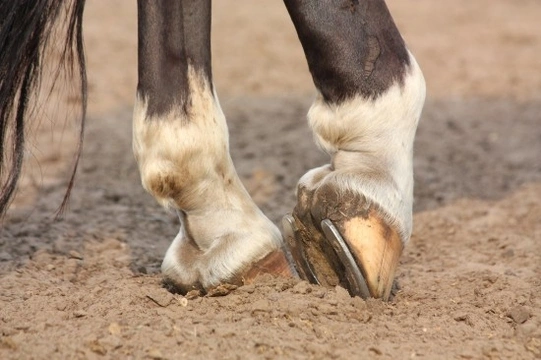Pets
Pets for studWanted petsBreedersAccessories & services
Knowledge hub
Support
Support & safety portal
What is Equine Pastern Dermatitis?
Every horse owner knows how annoying it is when their mount develops a sore on their pasterns which seems virtually impossible to clear up. The chances are the horse has developed a condition known as equine pastern dermatitis or EPD which is not a disease as such, but what is referred to as a cutaneous reaction pattern.
If your horse has a sore on their pasterns which will not clear up, you would need to find out what is causing the problem before it can be effectively treated with any sort of success. Horses with feathers tend to be more predisposed to the condition although any horse may suffer from it and it affects the back of the pastern more especially where the skin lack pigment.
Signs to Watch Out For
Failure to treat any lesions that have formed will quickly see them spreading to to other areas and this includes to the front of the pastern and the fetlock. The first signs of a problem could be slight swellings but other things to look for include the following:
- Redness around the back of the pastern
- Scaling of the skin
- Nasty oozing lesions
- Matted hair
- Crusted skin around the back of the pastern
Occasionally the cause could be due to swelling in a blood vessel wall which is called vasculitis and if this is the case, then ulcers soon form on the skin in the affected area of the pastern. On top of this, the condition is often complicated by some sort of bacterial infection taking hold which can make the condition worse and therefore harder to control and treat.
Where the condition is chronic, the skin around the pastern begins to thicken and crack because of constant movement and this can be extremely painful for the horse.
Diagnosing the Condition Early is Essential
It's essential for the condition to be diagnosed early and the cause established. It is a big mistake to start using topical creams on the sores before a vet has had time to find out just what the triggers are. It's also important to assess a horse's environment to find out if anything could be triggering the reaction. This includes checking the following:
- Bedding – wet and dirty bedding can be the trigger
- Pasture – constantly being on muddy ground can trigger the condition
- Parasites – it's important to rule out chorioptic mange especially where draft horses are concerned
One of the more common causes is a bacterial infection with the culprits normally being either Dermatophilus congolensis or Staphylococcus aureus. The condition also seems to affect horse with white pasterns more than ones with darker ones because they are more at risk of suffering from photosensitisaion as well as immune-mediated pastern leukocytoclastic vasculitis (PLV). Once a correct diagnosis has been established a vet would be able to recommend a treatment.
Treating the Condition
Your vet may suggest doing the following which deals with a few environmental changes as part of an ongoing way of managing the condition:
- A horse with the condition should not be turned out in a muddy pasture
- Box rest might be in order, but hygiene is all-important should this be the case
- Turn out should be later in the day after all dews have cleared
- Horses with heavier feathers should have these clipped to reduce the risk of moisture remaining around the pastern
- If your horse is suffering from PLV, you should only turn them out between the hours of 10 am in the morning and 4 pm in the afternoon, making sure you bandage or wrap the affected legs
- Affected areas need to be cleaned when a horse comes in with a specifically formulated antiseptic shampoo which your vet should provide
When it comes to treating the condition, vets usually recommend and prescribe a topical treatment to be used in conjunction with an antibacterial shampoo. If there are lesions on the pastern, then an astringent solution should be used to wash these before applying any ointments.
There are also certain sprays which work very well at treating the condition, one of which is hydrocortisone aceponate. However, horses suffering from an immune-mediated condition would also benefit and need to be put on prednisolone or dexamethasone. If, however, parasites are found to be the cause,then treatments would involve using either ivermectin or some sort of topical solution to treat the parasites while at the same time managing the lesions and sores.
Conclusion
The earlier equine pastern dermatitis is correctly diagnosed then treated, the better the outcome generally is. Horses are made to feel a lot more comfortable because if left untreated, the lesions and sores quickly become extremely painful and recovery can be that much longer. If you are at all worried the best thing to do is get a vet out and they will carry out some skin tests to establish the root cause before recommending a treatment for your horse. They may also want to assess where you keep your horse so they can rule out any environmental triggers.



